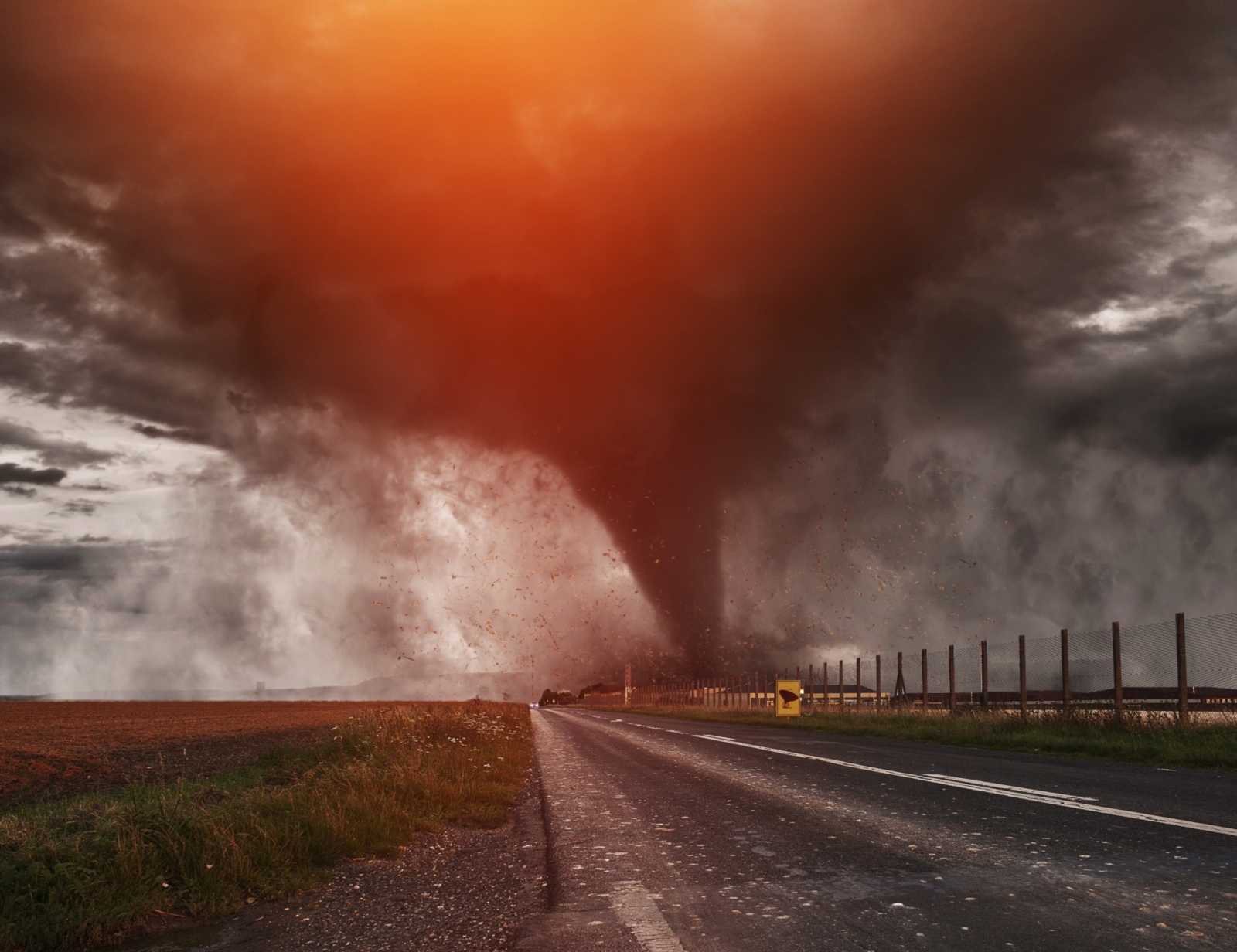How Can You Prepare Your Home for a Tornado?

Tornadoes are unpredictable and destructive natural disasters that can cause significant damage to homes and pose serious risks to lives. Preparation is key to minimizing the impact of a tornado on your home and ensuring the safety of your family. In this comprehensive guide, we'll discuss essential steps you can take to prepare your house for a tornado, from creating a safety plan to fortifying your home against high winds and debris.
Understanding Tornadoes:
Before getting into preparation steps, it's crucial to understand what tornadoes are and how they form. Tornadoes are violent rotating columns of air that extend from thunderstorms to the ground. They can vary in size, duration, and intensity, with wind speeds reaching up to 300 miles per hour. Tornadoes often accompany severe thunderstorms and can occur at any time of the year, although they are most common during spring and summer months. Understanding the characteristics and behaviors of tornadoes is essential for developing an effective tornado safety plan and minimizing the risk of harm to yourself and your property.
Creating a Tornado Safety Plan:
The first step in preparing your home for a tornado is to create a comprehensive safety plan. This plan should outline what actions to take before, during, and after a tornado to ensure the safety of everyone in your household. Be sure to involve all members of your family in developing and practicing the plan to ensure everyone knows what to do in an emergency. Key components of a tornado safety plan include:
- Establishing designated safe areas: Identify the safest areas of your home where you can take shelter during a tornado. Basements, storm shelters, and interior rooms on the lowest level of the house are typically the safest options. Make sure these areas are free from hazards such as windows and heavy furniture that could pose risks during high winds.
- Designating a meeting point: Choose a predetermined meeting point outside of your home where family members can gather after a tornado has passed. This will help account for everyone's safety and facilitate communication in case of separation. Ensure that all family members are familiar with the designated meeting point and know to proceed there once it is safe to do so.
- Practicing emergency drills: Regularly conduct tornado drills with your family to ensure everyone knows what to do in the event of a tornado. Practice moving quickly to designated safe areas and taking shelter under sturdy furniture or mattresses to protect against flying debris. Additionally, simulate various scenarios, such as power outages or blocked escape routes, to prepare for different emergency situations effectively.
Fortifying Your Home:
In addition to creating a safety plan, fortifying your home against tornadoes can help reduce the risk of damage and increase overall safety. Is your residence prepared for a disaster, including residential restoration considerations? Consider reinforcing windows and doors with storm shutters or impact-resistant materials, securing loose outdoor items, and trimming trees to minimize potential hazards during high winds. Here are some essential steps to fortify your home:
- Reinforcing windows and doors: Install impact-resistant windows or cover existing windows with storm shutters or plywood to protect against high winds and flying debris. Strengthen exterior doors with reinforced steel or install heavy-duty door braces to prevent them from being blown open during a tornado.
- Securing outdoor items: Anchor outdoor furniture, play equipment, and other loose items to the ground or bring them indoors before a tornado strikes. Flying debris can become dangerous projectiles during a tornado, causing extensive damage to property and posing serious risks to occupants.
- Strengthening the roof: Ensure your roof is structurally sound and resistant to high winds by securing loose shingles, reinforcing roof trusses, and installing hurricane straps or clips to connect the roof to the walls of your home. Consider investing in a reinforced roof or storm-resistant roofing materials for added protection.
- Clearing debris: Keep your property clear of debris that could become airborne during a tornado. Trim overhanging branches, secure loose branches, and remove dead or diseased trees that could pose a hazard to your home or neighboring properties.
Emergency Supplies and Communication:
In addition to fortifying your home, it's essential to have emergency supplies on hand and establish communication plans to ensure you can stay informed and connected during and after a tornado. Stock up on necessities such as non-perishable food, water, flashlights, batteries, and a first aid kit, and designate a central location for storing these supplies where everyone in your household can easily access them in an emergency. Here are some key considerations:
- Emergency supply kit: Prepare a well-stocked emergency supply kit containing essential items such as non-perishable food, water, flashlights, batteries, first aid supplies, medications, and important documents. Store the kit in a designated location that is easily accessible during an emergency.
- Communication plan: Establish a communication plan with family members, neighbors, and emergency contacts to coordinate actions before, during, and after a tornado. Make sure everyone knows how to reach each other and designate an out-of-town contact person as a central point of communication in case local phone lines are down.
Preparing your home for a tornado is essential for mitigating risks and ensuring the safety of your family and property, especially against potential tornado damage. By creating a comprehensive safety plan, fortifying your home against high winds and debris, and establishing emergency supplies and communication plans, you can increase your readiness and resilience in the face of tornadoes. Stay informed about tornado warnings and advisories in your area, and always prioritize safety above all else during severe weather events. Remember to regularly review and update your safety measures to adapt to changing circumstances and ensure ongoing preparedness.
Why Choose All-Clean USA for Tornado Restoration?
At All-Clean USA, we pride ourselves on having state-of-the-art equipment and a highly dedicated staff poised to assist you in restoring your life to normalcy swiftly. Our team stands ready to respond to tornado disasters around the clock, every day of the week, throughout the entire year. Contact us today for immediate support and assistance in the aftermath of a tornado.


